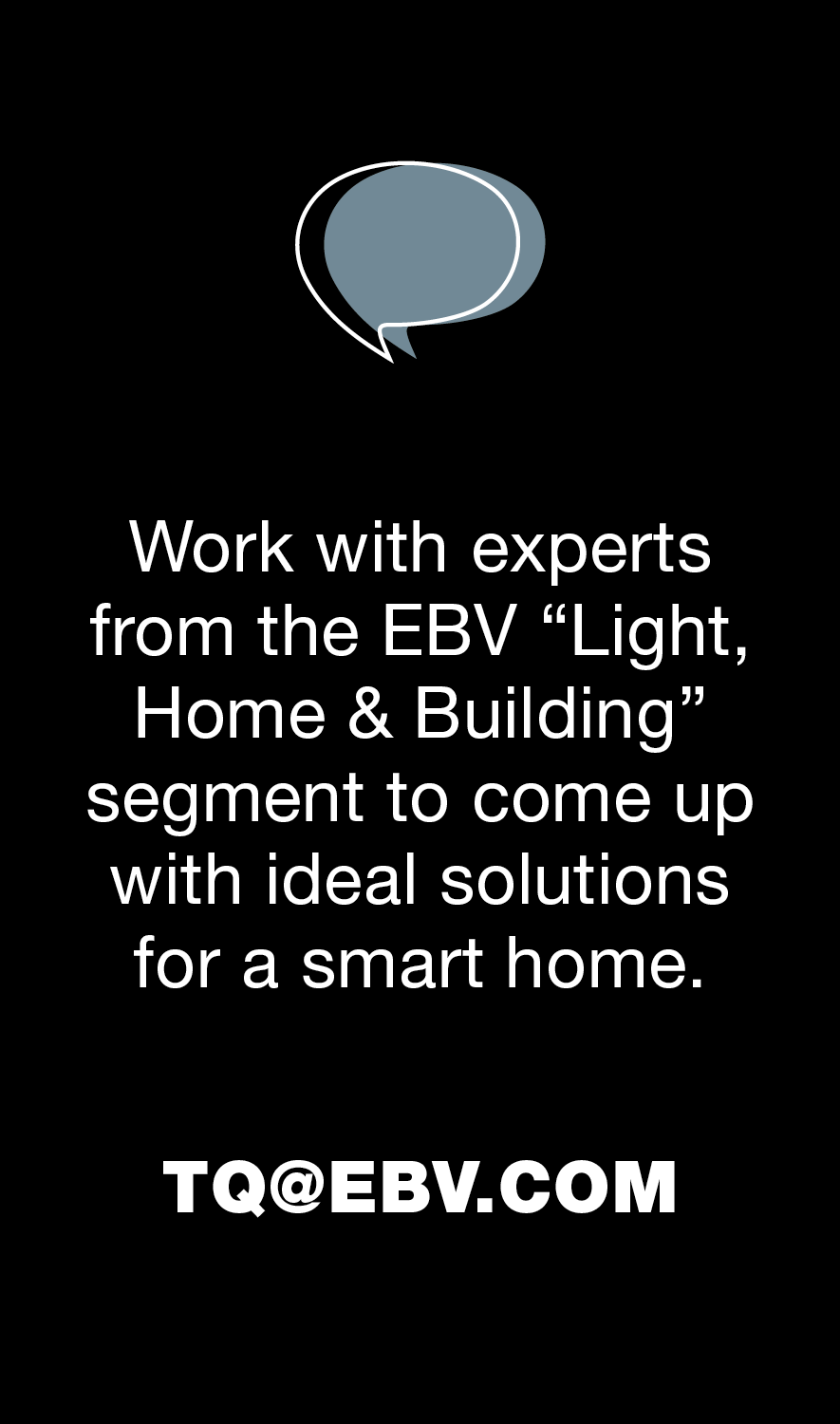Smart Buildings means that houses and apartments are increasingly being equipped with intelligent technologies. But they not only provide increased convenience. They also help to find answers to fundamental challenges such as the ageing population and climate change.
There are several reasons to turn a home into a Smart Home. For most users, the added convenience and quality of life are the main criteria for living in an intelligent home. This was shown by a survey by the digital association Bitkom in 2019. More than half of those questioned wanted to make their four walls safer – either with intelligent alarm systems, smart smoke detectors or high-tech video surveillance. However, with all the current discussions about climate change it is becoming increasingly important for Smart Home technologies to be an important element of more energy efficient living: If the sun is shining the heating is turned down automatically, when all the occupants leave the house the system switches to energy-saving mode.
Smart Buildings offer Safe homes for older people
Living independently at home for longer. At present there are still relatively few people who cite this as a reason to use Smart Home technologies. But the significance of this issue is growing. “Smart Home applications are not just something for younger people. A Smart Building has many benefits for older people too. It also can help everyone to live in their own four walls for as long as possible”, says Dr. Sebastian Klöß, Bitkom spokesperson for consumer technology.
For example, sensor-controlled orientation lighting automatically detects when someone gets out of bed at night, for example to go to the toilet. This helps prevent falls in the dark. If a resident does fall and requires assistance, the Smart Building can notify relatives or the emergency services. Before a fire breaks out, an intelligent oven turns off the hob if it has been accidentally left on after cooking. Door sensors monitor whether someone has left the home at an unusual time. Or control the door opening times. “All these Smart Home functions help older people, but they also benefit single people, couples and families with children”, says Klöß.
Voice controlled domestic appliances
Voice control is increasingly being used to operate the Smart Building. According to a Bitkom survey in May 2020, around three quarters of users of Alexa, Siri etc. use the smart voice assistant. And use it to control devices in their homes, such as lighting, heating or household robots. “Intelligent voice assistants are developing rapidly and can be used in an increasing number of devices. From extractor hoods to cars”, says Bitcom expert Klöß. “In the future, controlling a device by voice will be just as natural as pushing a button or swiping a display.”
Saving energy, preventing emissions
Smart technologies are not only effective in Smart Homes. They can also considerably increase efficiency in commercial buildings. And make a significant contribution to conserving resources, as Abel Samaniego, Founder and CEO of Dabbel, explains: “Optimum control of building service systems is absolutely essential these days. As the building sector accounts for 40 per cent of energy consumption and 39 per cent of CO2 emissions in Europe. More than 50 per cent of this energy is used inefficiently and more than 28 per cent can be attributed to human errors or incorrect control decisions.”
However, the company has developed an AI system that works alongside the existing building services. And it enables previously manually controlled resources such as power and heat to be managed much more efficiently. Thanks to autonomous control, energy consumption can be cut by 40 per cent. Human errors in operating the building services reduced by up to 80 per cent.
Smart office buildings
But intelligent systems can do so much more. For example, a cloud platform provided by Edge Technologies links all the technical systems at Unilever’s North American headquarters. The 325,000 square metre building in Englewood Cliffs, New Jersey, has undergone a complete modernisation of all its building systems. And has been fitted with Smart Building technologies. Thousands of sensors have been installed for the air-conditioning system, access control and the lifts. While state of the art LED lights with daylight and motion sensors have been installed. Internet of Things systems enable the building to learn from occupants’ behaviour and remember their preferences. This has enabled the building’s energy consumption to be cut by 50 per cent. The system gives the employees an opportunity to reserve workstations, locate one another and adjust air-conditioning. All by using a single app on their smartphone.
One of the most sustainable and smart buildings in the world is The Edge in Amsterdam. Here, occupancy, movements, lighting levels, humidity and temperature are continuously measured. Based on this data, the building systems, including LED lighting with Ethernet power supply, are adjusted to achieve maximum efficiency. To control the heating and air-conditioning, the building also detects the employees’ number plates as they drive into the parking area. When the employee arrives, the air-conditioning at their work station is started in line with their preferences. Even the canteen is benefiting from the Smart Building. Based on data recorded in the past and using traffic and weather information, the system predicts how busy the canteen will be. Thus preventing food from being wasted.
All in all, networked infrastructures in Smart Buildings and Individual Homes are making a significant contribution, not just to bringing about a successful change of energy policy, but also to more responsible use of resources in general.



